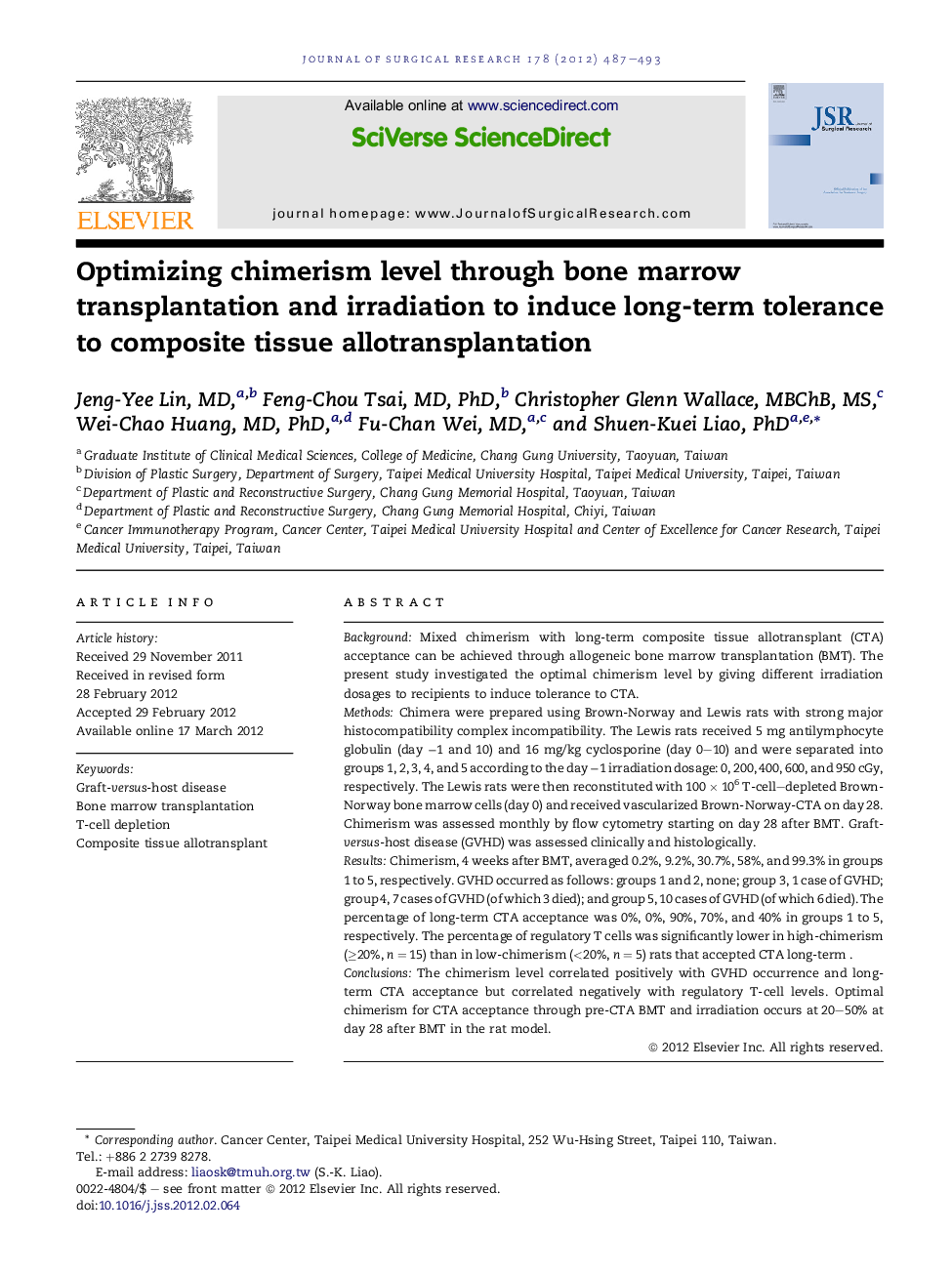| Article ID | Journal | Published Year | Pages | File Type |
|---|---|---|---|---|
| 4301423 | Journal of Surgical Research | 2012 | 7 Pages |
BackgroundMixed chimerism with long-term composite tissue allotransplant (CTA) acceptance can be achieved through allogeneic bone marrow transplantation (BMT). The present study investigated the optimal chimerism level by giving different irradiation dosages to recipients to induce tolerance to CTA.MethodsChimera were prepared using Brown-Norway and Lewis rats with strong major histocompatibility complex incompatibility. The Lewis rats received 5 mg antilymphocyte globulin (day −1 and 10) and 16 mg/kg cyclosporine (day 0–10) and were separated into groups 1, 2, 3, 4, and 5 according to the day −1 irradiation dosage: 0, 200, 400, 600, and 950 cGy, respectively. The Lewis rats were then reconstituted with 100 × 106 T-cell–depleted Brown-Norway bone marrow cells (day 0) and received vascularized Brown-Norway-CTA on day 28. Chimerism was assessed monthly by flow cytometry starting on day 28 after BMT. Graft-versus-host disease (GVHD) was assessed clinically and histologically.ResultsChimerism, 4 weeks after BMT, averaged 0.2%, 9.2%, 30.7%, 58%, and 99.3% in groups 1 to 5, respectively. GVHD occurred as follows: groups 1 and 2, none; group 3, 1 case of GVHD; group 4, 7 cases of GVHD (of which 3 died); and group 5, 10 cases of GVHD (of which 6 died). The percentage of long-term CTA acceptance was 0%, 0%, 90%, 70%, and 40% in groups 1 to 5, respectively. The percentage of regulatory T cells was significantly lower in high-chimerism (≥20%, n = 15) than in low-chimerism (<20%, n = 5) rats that accepted CTA long-term .ConclusionsThe chimerism level correlated positively with GVHD occurrence and long-term CTA acceptance but correlated negatively with regulatory T-cell levels. Optimal chimerism for CTA acceptance through pre-CTA BMT and irradiation occurs at 20–50% at day 28 after BMT in the rat model.
